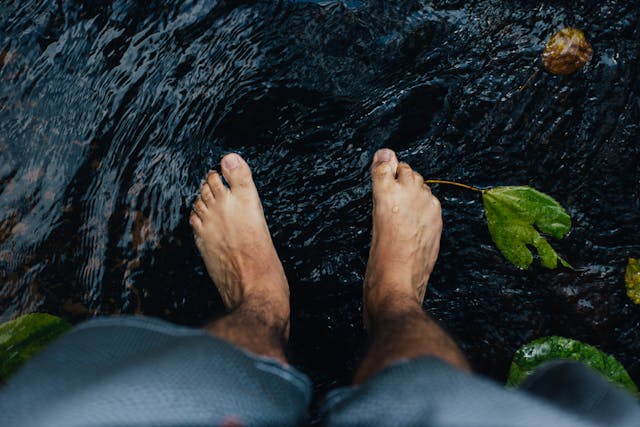We walk, run, and stand every day, yet rarely pause to consider the quiet strength of our feet. Long seen as maps of health and emotion across cultures, our soles hold more than we give them credit for. In a fast-paced world, turning to ancient foot wisdom isn’t just nostalgic, it’s a way to reconnect with the body from the ground up.
What Your Feet Remember, And Why You Should Listen
In many traditional healing systems, the feet are more than just a means of movement. In Chinese medicine, the soles are marked with meridian points that connect to internal organs. Ayurveda treats the feet as sacred, grounding the body’s energy and giving clues about internal balance. Reflexology maps the entire body onto the foot, suggesting that every area relates to a physical or emotional function.
Today, more people are paying attention to what their feet might be trying to say. Cold toes, persistent dryness, or tension in the arches can point to issues like poor circulation, chronic stress, or muscle fatigue. These signs often show up early, before more obvious symptoms appear elsewhere in the body.
Some foot problems that seem minor at first can be more revealing. A verruca, for instance, might reflect how the immune system is coping or how the skin is responding to pressure and moisture. Taking steps toward verruca removal is not just about comfort. It’s a way of noticing how your body reacts, how it heals, and where it might need support. Paying closer attention to our feet isn’t about searching for hidden meaning. It’s about being practical, responsive, and a little more aware of what your body deals with every day.
What Happens When Natural Isn’t Enough?
Traditional foot care has always combined physical touch with close observation. Today, those same instincts still matter, even when addressing modern concerns. Skin irritations, fatigue, and recurring infections are often best managed with a mix of common sense, hygiene, and medical support.
Verrucas are a good example. These small, often painful growths caused by HPV don’t always respond to home remedies. While herbal foot baths or natural salves can offer relief, lasting treatment usually requires something more targeted. Techniques like cryotherapy, which freezes the affected skin, are among the more effective options available. Verruca treatment today blends the old and new: keep feet clean and dry, wear breathable shoes, and when needed, turn to reliable clinical methods. A holistic view doesn’t reject medical care. It simply asks us to see symptoms like a verruca not in isolation, but as part of how the body manages pressure, recovery, and resistance.
How To Care Without Overthinking It
Tuning into your feet doesn’t require a full routine. Just a few consistent habits can improve comfort and awareness. A warm soak with Epsom salts can ease tension and soften skin. Brief self-massage around the arches or heels helps with circulation. Reflexology charts can guide gentle pressure work at home. Even walking barefoot on natural surfaces like grass or sand may support balance, though research is still limited.
Small choices add up. Letting feet dry fully, wearing breathable shoes, and noticing changes in skin or texture help prevent issues before they grow. Our feet move us through the world, but they also reflect where we’ve been. Paying attention is a simple way to stay grounded in every sense.




